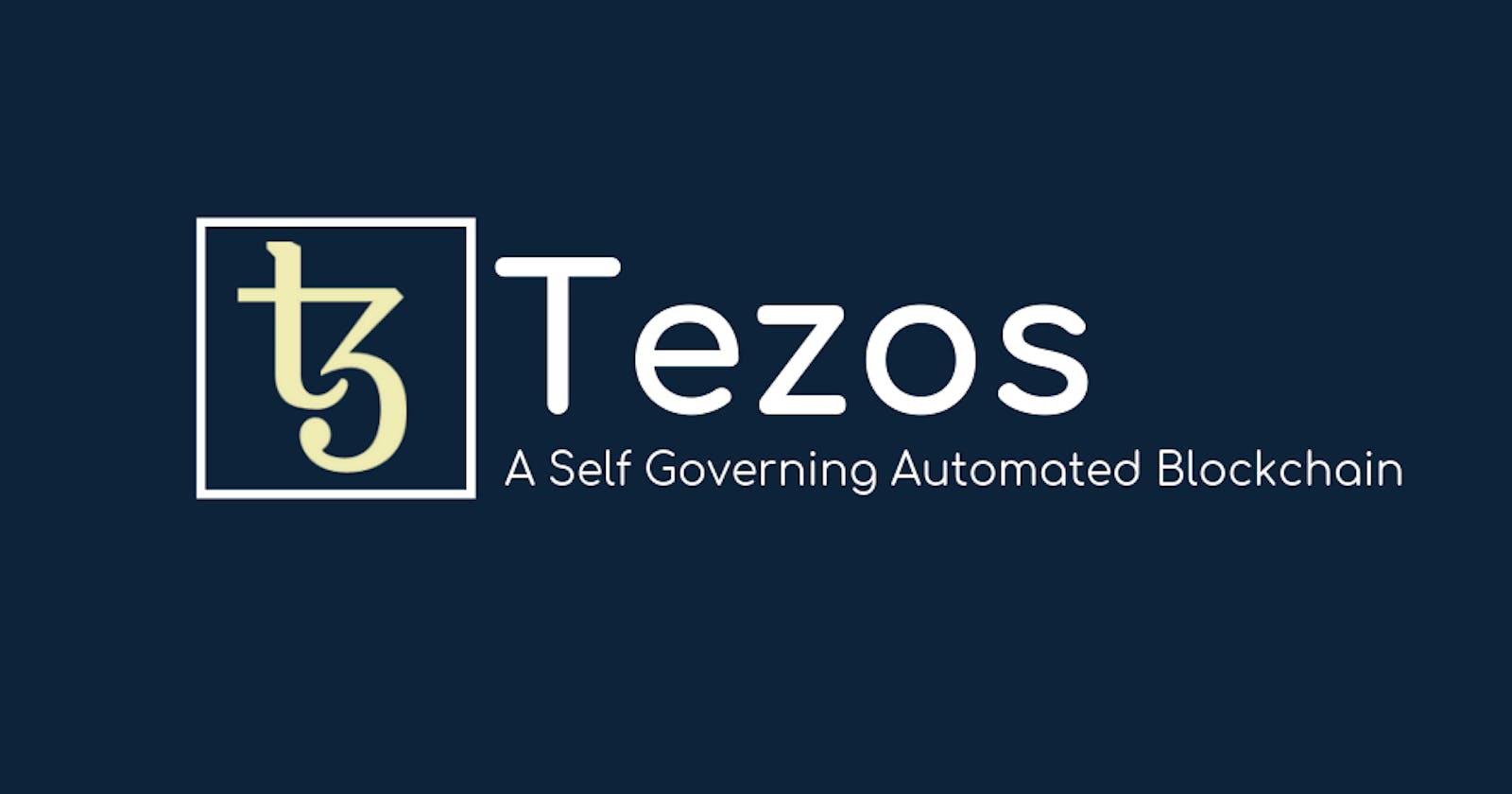Welcome to the beginner's guide to Tezos blockchain. This article will provide a comprehensive overview of Tezos, a decentralized blockchain platform with unique features and promising potential. Whether you're new to blockchain or familiar with chains like Ethereum, Polygon, or Solana, this guide will help you understand Tezos and how it stands out in the market. By the end, you'll have a solid foundation to explore Tezos and its development ecosystem.
Introduction to Tezos Blockchain

What is Tezos?
Tezos is a decentralized blockchain platform designed to facilitate smart contracts and decentralized applications (dApps). It stands out for its ability to upgrade and evolve without requiring hard forks, thanks to its self-amendment feature.
History and Background
Tezos was launched in 2018 and gained attention for its innovative approach to governance and protocol upgrades. It was developed by Arthur and Kathleen Breitman, with the goal of creating a secure and adaptable blockchain platform.
Principles and Goals of Tezos
Tezos is built upon three core principles: self-amendment, on-chain governance, and formal verification. These principles enable the network to evolve democratically, maintain security through community participation, and ensure smart contracts are mathematically proven correct.
Unique Aspects and Features of Tezos
On-chain Governance :
Tezos stands out with its on-chain governance model, allowing token holders to directly participate in decision-making. This democratic process ensures protocol upgrades are proposed, voted upon, and implemented by the community.
Example: Token holders can propose improvements such as upgrading the block size or adding new features. Other token holders then vote on these proposals, and if approved, the protocol is automatically upgraded.
Self-Amendment and Upgradability :
Tezos enables self-amendment, allowing the protocol to evolve and upgrade without hard forks. Through on-chain voting, the Tezos community decides on protocol changes, ensuring the network remains adaptable and future-proof.
Example: If a proposal to improve the gas efficiency of smart contracts gains majority approval, the protocol can automatically implement the upgrade without disrupting the network.
Formal Verification :
Tezos natively supports formal verification, a process that mathematically verifies the correctness of smart contracts. This feature enhances security by eliminating potential bugs and vulnerabilities in the code.
Example: By using formal verification, developers can ensure that their smart contracts execute exactly as intended, preventing potential exploits or unintended consequences.
Liquid Proof-of-Stake (LPoS) Consensus :
Tezos utilizes a liquid proof-of-stake consensus mechanism. Token holders can delegate their coins to bakers who validate transactions and create new blocks. This approach promotes decentralization and stakeholder participation.
Example: Alice delegates her Tezos tokens to a baker. The baker includes Alice's transactions in the blocks they validate and, in return, shares the rewards earned with Alice.
Comparison with Other Chains

Tezos vs. Ethereum
1.1 Governance Model - Tezos' on-chain governance model allows token holders to directly participate in decision-making processes, ensuring a more democratic and inclusive approach compared to Ethereum's off-chain governance.
1.2 Self-Amendment - Tezos' self-amendment feature enables the network to upgrade and evolve without contentious hard forks, promoting a smoother and more efficient process compared to Ethereum's reliance on hard forks for significant protocol changes.
1.3 Smart Contract Languages - Tezos offers Michelson, a smart contract language designed with formal verification in mind, enhancing security and correctness. Ethereum primarily uses Solidity, which lacks native formal verification capabilities.
1.4 Scalability - Tezos recognizes the need for scalability and is actively exploring solutions to handle a growing number of transactions. This proactive approach sets Tezos on a path to overcome scalability challenges faced by Ethereum.
Tezos vs Solana
2.1 Governance and Consensus - Tezos' on-chain governance empowers token holders to actively participate in decision-making processes, fostering a more decentralized and inclusive ecosystem compared to Solana's Council-based governance.
2.2 Self-Amendment - Tezos' self-amendment capability allows the network to evolve without contentious hard forks, providing a more efficient and seamless upgrade process compared to Solana, which relies on traditional hard forks.
2.3 Formal Verification - Tezos' native support for formal verification enhances security and reduces potential vulnerabilities in smart contracts, providing a higher level of trust and reliability compared to Solana's approach.
2.4 Development Flexibility - Tezos offers multiple smart contract languages, including Michelson, giving developers the flexibility to choose the language that best suits their needs. Solana primarily uses Rust, limiting developers to a specific language.
Tezos vs. Polygon
3.1 Scalability Solutions - Tezos is actively researching and developing scalability solutions to handle a growing number of transactions, showcasing its commitment to addressing scalability challenges similar to Polygon's Layer 2 solution.
3.2 Governance and Consensus - Tezos' on-chain governance provides a decentralized and inclusive decision-making process, aligning with the goals of Polygon's effort to foster a more participatory ecosystem.
3.3 Security and Reliability - Tezos' emphasis on formal verification enhances the security and correctness of smart contracts, contributing to a more robust and reliable ecosystem compared to Polygon's focus on Layer 2 scaling.
Tezos vs. Arbitrum
4.1 Scalability and Layer 2 - Tezos' exploration of scalability solutions demonstrates its commitment to addressing scalability challenges, similar to Arbitrum's Layer 2 approach for Ethereum, providing faster and cheaper transactions.
4.2 Governance and Consensus - Tezos' on-chain governance model allows token holders to actively participate in decision-making, ensuring a more inclusive and democratic process compared to Arbitrum's off-chain governance.
4.3 Ecosystem Integration - Tezos focuses on building its own ecosystem, creating opportunities for innovation and growth, while Arbitrum operates as a Layer 2 solution within the Ethereum ecosystem, limiting its scope to existing projects.
Future Scopes and Potential of Tezos

Roadmap and Upcoming Developments - Tezos has an active roadmap that includes improvements and enhancements to its core protocol and developer tools. Upcoming developments may include further advancements in on-chain governance, scalability solutions, and integration with emerging technologies.
Applications and Use Cases - Tezos has potential applications in various sectors, including finance, supply chain, gaming, and decentralized finance (DeFi). Its features, such as formal verification and on-chain governance, make it suitable for building secure and adaptable applications.
Growing Ecosystem and Community - Tezos has a growing ecosystem of developers, projects, and community-driven initiatives. With active participation and support, Tezos has the potential to expand its ecosystem, attract more developers, and foster innovation.
Conclusion

Tezos is a decentralized blockchain platform with unique features like on-chain governance, self-amendment, formal verification, and LPoS consensus. By understanding Tezos and comparing it with other chains, you can appreciate its distinctive qualities. Tezos offers exciting opportunities for developers and users, with its focus on security, adaptability, and community-driven decision-making.
Note: To delve deeper into Tezos and explore technical details, consider visiting the Tezos website, Tezos documentation, and OpenTezos website. These resources provide comprehensive insights, detailed comparisons, and further examples to enhance your understanding of Tezos and its ecosystem.
